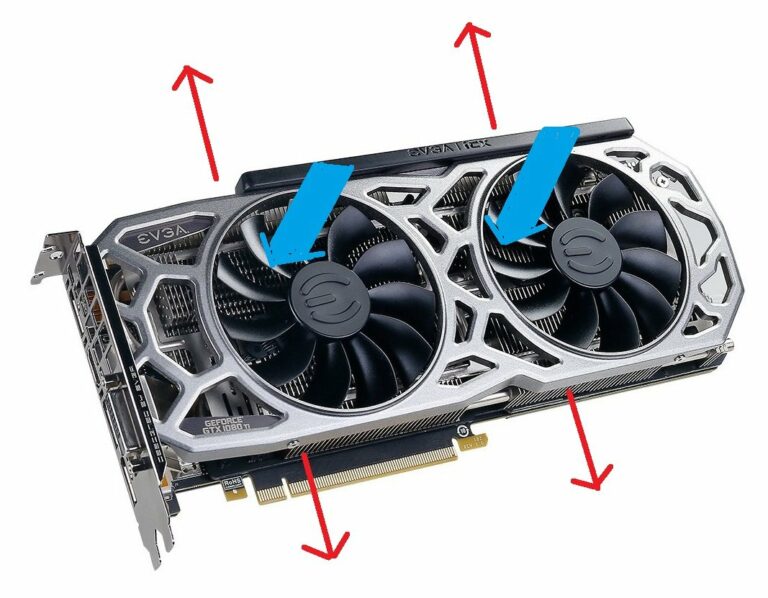For many gamers, the GPU is the most important component in their gaming system. It’s also one of the most expensive components to replace or upgrade. The performance of a GPU can be impacted by its cooling solution, so it’s important to make sure you have the right one for your setup.
The gpu cooler is a type of cooling solution that can be used for your GPU. It will help to keep the temperature down and maintain the performance of your graphics card.
We already know that Nvidia’s RTX series GPUs have been announced and are now available for pre-order, and we also know that AMD’s next-gen 7nm will be launched later this year. For the RTX series GPUs, we’ve already seen several manufacturers’ reference model designs. Now, if you’re going to purchase a new GPU, you need be aware of key details such as the GPU’s length, heat spreader, and cooling capabilities. Today’s topic will cover the specifics of the various kinds of cooling and how they operate.
An open-air cooler and a blower cooler are the two main kinds of cooling solutions. The liquid cooling solution is another kind of cooling solution that is popular these days. But we’ll skip that since, with the exception of enthusiasts, most of us don’t want to go with that construction, and I’m sure most of us would agree that it’s risky. I’m not suggesting that going with a bespoke liquid cooling system for your GPU is a terrible idea; all I’m saying is that you’ll have to be extra cautious while installing and maintaining such equipment. However, there are certain GPUs that come with an AIO Liquid Cooling solution, but you need think about a few things before purchasing one, such as the PC case you have, since it should allow you to install the rad that came with the GPU.
To comprehend the difference between a blower and an open-air cooler, one must first grasp how they operate. With the assistance of a heatsink and a fan, they are designed to remove hot air from the GPU. It works similarly to how a PC case fan works, with intake fans bringing cold air in and exhaust fans removing heated air from the interior of your case. However, GPUs work a bit differently; both kinds utilize one or more fans, as well as a heatsink, to suck in hot air from the inside of your case, but they don’t instantly blast it out into the air. Instead, an open-air GPU takes in hot air with the help of fans, which are then spread all over the heatsink, and then the air is expelled back into the case through the openings, which is why they are called open-air because there is no barrier between the heatsink and the air inside the case. A diagram (below) may help you understand where the blue arrows represent a heatsink.
The GPU with the blower design, on the other hand, has an extended protective cover all around the heat-sink, and the only access area for blowing air out is at the card’s IO. The fan in this design draws air in from the interior of the case and exhausts it entirely via the vented holes on the card. The diagram below shows how it works, with blue arrows indicating intake and red arrows indicating exhaust.
– Best graphics cards on a budget
The key issue now is whether one is best for your construction, and in this instance, I’ll attempt to make things as straightforward as possible. If you have a case with good airflow and enough of room for air to move about within, open-air cooling is the ideal option for you. On the other hand, if your case has limited airflow and you plan to use liquid cooling for your other components, the blower type card is the ideal option since it simply exhausts the hot air outside of your case. Nonetheless, the differences between these two types of cards are minor; however, you will need to make your decision based on the surrounding environment and other hardware components.

The how to lower gpu temp on laptop is a question that many people ask. There are different types of cooling solutions for your GPU, depending on the setup of your laptop.
{“@context”:”https://schema.org”,”@type”:”FAQPage”,”mainEntity”:[{“@type”:”Question”,”name”:”How can I improve my GPU cooling?”,”acceptedAnswer”:{“@type”:”Answer”,”text”:”
This is a difficult question to answer, as there are many factors that contribute to GPU cooling. However, you can try and use a fan controller or fanless case to help regulate the temperature of your system.”}},{“@type”:”Question”,”name”:”What is an effective cooling solution for a PC?”,”acceptedAnswer”:{“@type”:”Answer”,”text”:”
An effective cooling solution for a PC is a CPU cooler that has a heat sink and fan.”}},{“@type”:”Question”,”name”:”What cooling do I need for my PC?”,”acceptedAnswer”:{“@type”:”Answer”,”text”:”
You will need a CPU cooler, a graphics card cooler, and a power supply.”}}]}
Frequently Asked Questions
How can I improve my GPU cooling?
This is a difficult question to answer, as there are many factors that contribute to GPU cooling. However, you can try and use a fan controller or fanless case to help regulate the temperature of your system.
What is an effective cooling solution for a PC?
An effective cooling solution for a PC is a CPU cooler that has a heat sink and fan.
What cooling do I need for my PC?
You will need a CPU cooler, a graphics card cooler, and a power supply.
Related Tags
- how to lower gpu temp
- types of computer cooling systems
- what is too hot for a gpu fahrenheit
- external pc cooling
- how to lower gpu temp with msi afterburner





